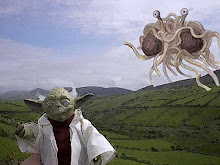Say, for instance, you happen to be happily walking through the low surf merrily picking up and discarding shells, looking for just the right one to decorate your desk back at the office.
With no warning at all, however, you feel a sharp sting from one of those pretty shells -- a sting that quickly flares into a crawling agony. With that quick sting, the cone snail's barbed spear has insidiously injected you with one of the most potent neurotoxins in existence.  (image credit: Richard Ling)
(image credit: Richard Ling)
 (image credit: Kerry Matz)
(image credit: Kerry Matz)
"The bright colors and patterns of cone snails are attractive to the eye, and therefore people sometimes pick up the live animals and hold them in their hand for a while." Meanwhile the snail may fire its harpoon, loaded with venom (the harpoon can penetrate gloves and even wetsuits)
Nerves short-circuited by this infinitesimally small amount of juice, in seconds the agony of where the stinger struck has faded into a heavy numbness. A relief, perhaps, but then it spreads and moments later the paralysis has seized the entire limb. Then the breathing troubles start ... and then, simply, your heart stops beating.
Yes, there are antivenoms available, but, frankly, with something that can kill in less than four minutes you'd have to carry it in your back pocket to survive. It wasn't just for their fondness for these pretty shells that lead the CIA to develop a weapon using this venom to dispatch enemies.
For more poisonous creatures go here...
Cone snail venoms contain a tremendously diverse natural pharmacology. The active components of the venom are small peptides toxins, typically 12-30 amino acid residues in length and are highly constrained peptides due to their high density of disulfide bonds. The small size yet extremely conserved structures make these toxins excellent for highlighting how subtle differences in structure, as little as a single amino acid change, can have profound effects upon potency or specificity.

The conotoxins are some of the most potent and diverse neurotoxins known, having an incredibly wide range of actions. Interestingly, a strong division exists not only between the mollusk eating and the fish eating species but also between species within a group or even individuals of the same species. The toxins from the fish hunting cone snails are also more bioactive upon the human system than the mollusk hunting cone snails, with deaths having occurred.
Three main classes of paralytic toxins have been the focus of intense investigation where all three interfere with neuronal communication but with different targets: alpha-conotoxins, binding to and inhibiting the nicotinic acetylcholine receptor; mu-conotoxins, directly abolishing muscle action potential by binding to the postsynaptic sodium channels; and omega-conotoxins, decimating the release of acetylcholine through the prevention of voltage activated entry of calcium into the nerve terminal.
alpha-Conotoxins And alpha-A-Conotoxins
Sequences of several alpha-conotoxins have been determined with a high degree of homology evident. They contain two cysteine bonds and thirteen to fifteen residues, with the majority coming from fish eating species. Diversity of spacing between toxins from fish eating and non-fish-eating species is evident although the cysteine framework is conserved except for conotoxin-SII.
The alpha conotoxins cause postsynaptic inhibition at the synaptic junction which results in paralysis and death. The muscle-type nicotinic receptor is inhibited by alpha conotoxins from fish eating species such as Conus. geographus, C. magus and C. ermineus, with toxins having a high affinity for the alpha+gamma site of the acetylcholine receptor. This is the same site favored by tubocurarine, unlike the snake venom alpha-neurotoxins which are more likely to bind to the alpha+delta site. In mammalian systems these peptides antagonistically bind to the alpha3/5 neuromuscular site.
Alpha-conotoxins of particular interest are SI and SII from Conus striatus. SI differs from other acetylcholine receptor ligands by binding differentially to a variety of vertebrate nicotinic acetylcholine receptors, an activity that may be explained by the presence of a proline in place of a positively charged amino acid at residue 9. Alpha-conotoxin SII, meanwhile, is structurally quite distinct in having three disulfide bonds, rather than the usual two, with no net positive charge and a free C-terminus. The notable difference in the specificity of SI widens the scope of study of vertebrate nicotinic acetylcholine receptors common targeting of SI and SII. Structural deviation also allows for some interesting structure-function relationship studies to shed light not only on the functional residues of the peptides but also the binding sites of the acetylcholine receptor.
Not all of the alpha-conotoxins target the neuromuscular junction, neuronal-specific peptides selectively target the alpha7, alpha3beta2 and alpha3beta4 neuronal nicotinic receptor subtypes. In addition to MII, four other neuronal alpha-conotoxins (AuIB, EpI, ImI and PnIB) have been isolated. While having strong conservations of cysteine bonds (2) and number of amino acids in loop one (4), these conotoxins can have differences in loop two, having three, six or seven residues. Despite this difference in loop two the activity is similar, indicating perhaps that binding specificity lies within loop one. It was subsequently determined through work on ImI that this was in fact the case, with a tri-peptide sequence (Asp-Pro-Arg) being crucial to activity. In addition to this difference in activity, the structure of the neuronally active peptides also differs from that of the neuromuscular specific alpha-conotoxins in having 4 amino acids in the first loop rather than 3 amino acids as is the case with the neuromuscular blocking alpha-conotoxins (except for E1)
Mu-Conotoxins
The tissue specific sodium channel blocking mu-conotoxins act primarily upon voltage-sensitive sodium channels in muscle, with only minimal binding to neuronal sodium channels This is unlike tetrodotoxin and saxitoxin which bind to both muscle and nerve sodium channels with equal affinity and independent of voltage. Mu-conotoxins are typified by conotoxin GIII isoforms from C. geographus venom. These toxins are similar to tetrodotoxin in the selective blocking of skeletal muscle sodium channels, as well as competitively inhibiting saxitoxin binding to receptor site 1 of voltage-sensitive sodium channels . The 22 amino acid GIII isoforms also inhibit muscle sodium channel activation through tetrodotoxin and saxitoxin-like voltage dependent interaction.
O-Superfamily Of Conotoxins
This superfamily consists of presynaptic channel blocking peptides: sodium channel blocking mu-O-conotoxins; sodium channel blocking delta-conotoxins; and calcium channel blocking omega-conotoxins.
Despite very limited sequence homology with the mu-conotoxins, the sodium channel inhibitor conotoxin GS was reported to be similar to the mu-conotoxins in also acting upon tetrodotoxin and saxitoxin sensitive sites but this data remains to be confirmed. A more recently isolated toxin, mu-PIIIA from Conus purpurascens, reversibly blocks a sodium channel in the rat brain which is tetrodotoxin-sensitive but not blocked by mu-conotoxin-GIIIA.
Mu-O-Conotoxins
The mu-O-conotoxins are distinguished from other members of the O-superfamily in blocking not only sodium channels, including those on Aplysia neurons which other sodium channel blockers are unable to effect, but at higher doses also block the fast-inactivating calcium currents and slightly blocking the sustained current. Although the mu-O-conotoxins have the same molecular core as the delta-and omega-conotoxins and like delta-conotoxins contain a high amount of hydrophobic residues (charged residues being present only in the first intercysteine loop) the mu-O-conotoxins share little peptide sequence homology. However, the mRNA sequences encoding mu-O conotoxins, such as MrVIB, share a significant homology with those encoding the omega-and delta-conotoxin precursors. The physiological as well as genomic data indicates that these neurotoxins are perhaps an evolutionary link between the variants of conotoxins that specifically target either sodium or calcium channels.
Delta-Conotoxins
Despite a lack of toxicity towards vertebrates, the delta-conotoxins such as conotoxin SVIA from Conus striatus bind with high affinity to voltage-independent sodium channels in the rat central nervous systems at a site separate from that bound by other neurotoxins. In contrast, the venom of the fish hunting species C. purpurascens contains a delta-conotoxin (PVIA) termed the 'lock-jaw' peptide, a vertebrate specific delta-conotoxin targeting the voltage-sensitive sodium channels. This sort of toxin is termed an excitotoxin due to its distinct production of rigid, rather than the typical flaccid, paralysis in fish. These results suggest that these toxins may be quite useful due to their ability to bind to the same site on receptors from different phyla yet produce different results. These sorts of results make possible further understanding of the structural criterion determining gating variations in sodium channels.
Omega-Conotoxins
The omega-conotoxins are all 24-30 amino acids in length with three disulfide bonds. However, these toxins are no less subtle in activity or diverse in sequence than the other classes of conotoxins. The divergent bioactivities make the omega conotoxins quite useful in furthering the understanding of calcium channels of the presynaptic terminal. By way of example, omega-conotoxin SVIB from C. striatus is bioactively distinct from other omega-conotoxins. It is the only one that is lethal through intracerebral injections of mice, utilizing a high-affinity binding site different from the high-affinity binding sites of other conotoxins such as GVIA from C. geographus or MVIIA from C. magus. Omega-conotoxin GVIA is also unique in binding to a site distinct from omega-conotoxin MVIIA as well as most omega-agatoxins from the spider Agelenopsis aperta.
C. magus venom contains the most major sequence variants of omega conotoxins of any other Conus species, containing four out of the eight possible combinations. Indeed, some of the most studied conotoxins (omega-conotoxin-MVIIA,-MVIIIC and MVIID) are found in this venom. The omega-conotoxins MVIIA and MVIIB from magus block the neuronal Ca2+ channels, competing with omega-conotoxins from geographus for the same sites in mammalian brains. However, these toxins have a narrower specificity in the amphibian brain in addition to differing in amino acid sequence. MVIIA in particular is a potent and selective blocker of N-type voltage sensitive calcium channels.
Like the spider toxin omega-Aga-IVA from Agelenopsis aperta, omega-CTx MVIIC blocks calcium channels not blocked by other calcium-channel blocking conotoxins. Omega-CTx MVIIC is a 26 amino acid, with three disulfide bonds, preferential blocker of P and Q type Ca2+ currents through the high affinity binding to voltage-sensitive Ca2+ channels. Omega-conotoxin MVIID displays more pronounced discrimination against the N-type voltage-gated calcium channels than any other omega-conotoxin as well as being able to target other voltage-gated calcium channels besides the N-type.
Recently discovered toxins from Conus catus are new members of the omega-conotoxin family. In radioligand binding assays, one of these toxins (CVID) has the highest selectivity for N-type over P/Q-type calcium channels when compared to other omega-conotoxins. These studies also investigated the effects upon rat N-type calcium channels and CVID had a similar potency to MVIIA. CVID was also unique in structure in having a rigid and well defined globular surface brought about by loop two being stabilized by two hydrogen bonds, resulting in loop two being proximal to loop four.
'King-Kong' Peptides
The so-called 'king-kong peptides' from the mollusk hunting C. textile (Textile cone; Cloth-of-Gold cone) are mollusk specific paralytic neurotoxins of high affinity receptors and ion channels. These conotoxins have a disulfide linked molecule similar to that of the omega-conotoxins yet differ in features such as an unusual net negative charge and a high content of hydrophobic residues. Further, one of the toxins (TxIIA) is especially unique with its uneven number of cysteine residues. The king-kong toxins induce membrane depolarization and spontaneous repetitive firing in addition to inducing a marked prolongation of the sodium dependent action potential duration. TxVIA mediates sodium channel inactivation through selective action upon mollusk sodium channels at a binding site distinct from that acted upon by other conotoxins.
The conotoxins may ultimately prove to be some of the most interesting and useful peptidic toxins. Subtle variations in the sequences of these natural wonders demonstrate the profound potential for dramatic differences in specificity and potency that can occur. The small size, multiple disulfide bonding and ingenious variations make conotoxins a tremendous natural pharmacological library.

















